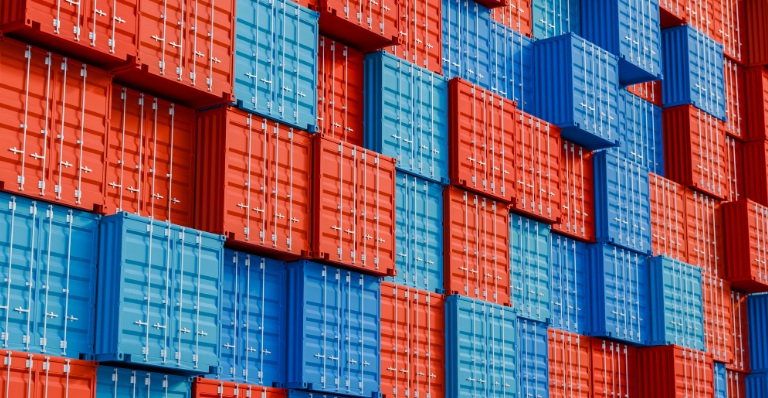The pall of pandemic-related gloom persists. Pessimism pummels economies—it sells, spreads and, at its worst, is self-fulfilling. But that’s clearly not our current experience. They say it’s not…but it’s hot out there. With COVID-19 fuelling our fears, the world economy continues to charge forward. Current indicators show strong growth, which is driving international trade to heights well beyond pre-pandemic levels. We’ve entered 2022 with impressive momentum and one of the key challenges that international commerce faces is actually sourcing enough capacity to facilitate the growth surge.
Near-term growth has two fundamental anchors:
1. Pent-up demand, which preceded the pandemic, has triggered the rapid initial recovery and sustained growth momentum through to the present time.
2. There’s been a further groundswell of pent-up demand throughout the world, as lockdowns limited activities in large chunks of the economy.
Consumers are generally in good shape, with higher-than-normal savings—pandemic restrictions drove more people to save than spend—and manageable debt levels. This is great news, as consumers make up the majority of the economy in most countries. Pent-up consumer demand is largely fuelling the recovery and will continue to do so in the near term. As such, managing the fear factor is critical to instilling hope and confidence at the consumer level, which in turn will unleash the pent-up spending into the economy.
But hot growth is leading to vast shortages, which threatens to exacerbate the situation. Supply chain constraints are affecting most industries and have created a potentially dangerous “shortage mentality:” Businesses needing inputs are willing to pay more to secure them and will buy more to insure against future shortages, while businesses supplying the inputs, opportunistically, constrain supplies to drive up prices. The result: Higher inflation in more than 30 years.
Higher prices are the best remedy for higher prices. Greater profit margins spur higher supply, either from existing businesses or new entrants eager to cash in on the good times. Thankfully, this dynamic is already leading to an increase in supplies of needed goods and services, spurring some to speculate that the worst is over.
Shortages are also the result of the pandemic. The Omicron variant is compromising production in ways most businesses can’t control. It may be less lethal, but it’s incapacitating more people, with significant impacts on human resource and production management. As opposed to prior situations of partial and full lockdown, which hit businesses simultaneously, now the effects are more at the plant level and harder to predict. We can expect a continuation, and possibly an increase, of pandemic-related supply chain disruptions.
You should also check out
With growing risks, Canadian companies face new challenges. EDC’s Global Economic Outlook offers insights to help you make better business decisions.
Prices are rising at a faster rate than we’ve seen in almost 40 years. Waved off at first as a temporary problem, central banks are tackling this head-on with tighter monetary policy. Expectations are now aligned around the fast tapering of quantitative easing programs, earlier and more rapid interest rate increases, and possible balance sheet reductions. This has financial markets and consumers braced for imminently tighter access to financing. A risk to the outlook is that current demand-led price growth moves into wage and other contract settlements, which will be harder for central banks to neutralize or reverse without more stringent monetary action.
Fiscal policy is also likely to become more stringent. This won’t be just in Canada; almost every Organisation for Economic Co-operation and Development (OECD) nation will be in the same fix. Pandemic stimulus has caused debt to balloon well beyond previously acceptable limits and governments everywhere will be under pressure to roll back stimulus and get their finances on a more sustainable trajectory before higher interest costs exacerbate the problem. Thankfully, they’ll be able to do this at a moment of economic strength, which will at least help on the revenue side.
International trade is generally benefiting from a strong world economy and consequently, Canada experienced surging growth in the dying months of 2021. Pent-up demand will power trade activity through 2022 and 2023, especially as supply chain constraints begin to diminish toward mid-year. Protectionism, in its many overt and more subtle forms, is expected to gradually give way to strong demand conditions. There’s definitely enough activity for everyone for at least the next two to three years.
This all adds up to impressive forecast numbers. Developed markets are projected to grow well above their long-term trend, collectively rising by 4.1% this year and by 3% in 2023. Likewise, emerging markets will see impressive growth in the wake of last year’s rebound, together expanding by 5.3% in 2022 and a further 5% next year. This puts 2022 global growth at a robust 4.8%, which will then moderate to a still-high 4.3% for 2023.
Demand conditions will keep commodity prices higher than initially expected and definitely higher than sustainable levels in the long term. The price of West Texas Intermediate crude oil is projected to average US$71 this year and US$65 in 2023. Gas prices will follow the same pattern, coming off current highs as Western European supplies are replenished. Copper prices will face continued upward pressure owing to immediate supply constraints, and increased structural demand as a result of higher global resolve to shift from fossil fuels to cleaner, copper-intensive forms of energy generation and transportation. Copper prices are projected to average US$8,997 this year, edging down slightly to US$8,287 in 2023.
Higher commodity prices are putting upward pressure on the Canadian dollar, although that’s being offset somewhat by shifts in expectations for monetary policy movements here and elsewhere. The Bank of Canada was initially more hawkish in its policy actions, boosting the loonie’s value against the U.S. dollar and the euro. But with the Federal Reserve and the European Central Bank now messaging tighter monetary actions, the Canadian dollar has eased back and is now expected to average US$0.79 this year and US$0.80 in 2023.
The bottom line?
Pandemic-fuelled uncertainty created broad expectations of a sluggish recovery. In contrast, growth is booming. Caught by surprise, global business is scrambling to ramp up production to meet demand. Supply chains, normally fine-tuned to perfection, are a mess, but will soon pull themselves back together. Inflation, perhaps the clearest signal of the economy’s strength, will moderate as central banks swing into action. At the same time, the effects of the Omicron variant threaten to delay the economy’s progress—and perhaps create space to better prepare for the inevitable upswing in activity. It’s all a bit chaotic, but the core story is a good one: There are clear rewards for those who are more prepared to deliver the goods over the next two years. Check out EDC Economics’ latest Global Economic Outlook and discover more valuable insights.
This commentary is presented for informational purposes only. It’s not intended to be a comprehensive or detailed statement on any subject and no representations or warranties, express or implied, are made as to its accuracy, timeliness or completeness. Nothing in this commentary is intended to provide financial, legal, accounting or tax advice nor should it be relied upon. EDC nor the author is liable whatsoever for any loss or damage caused by, or resulting from, any use of or any inaccuracies, errors or omissions in the information provided.







